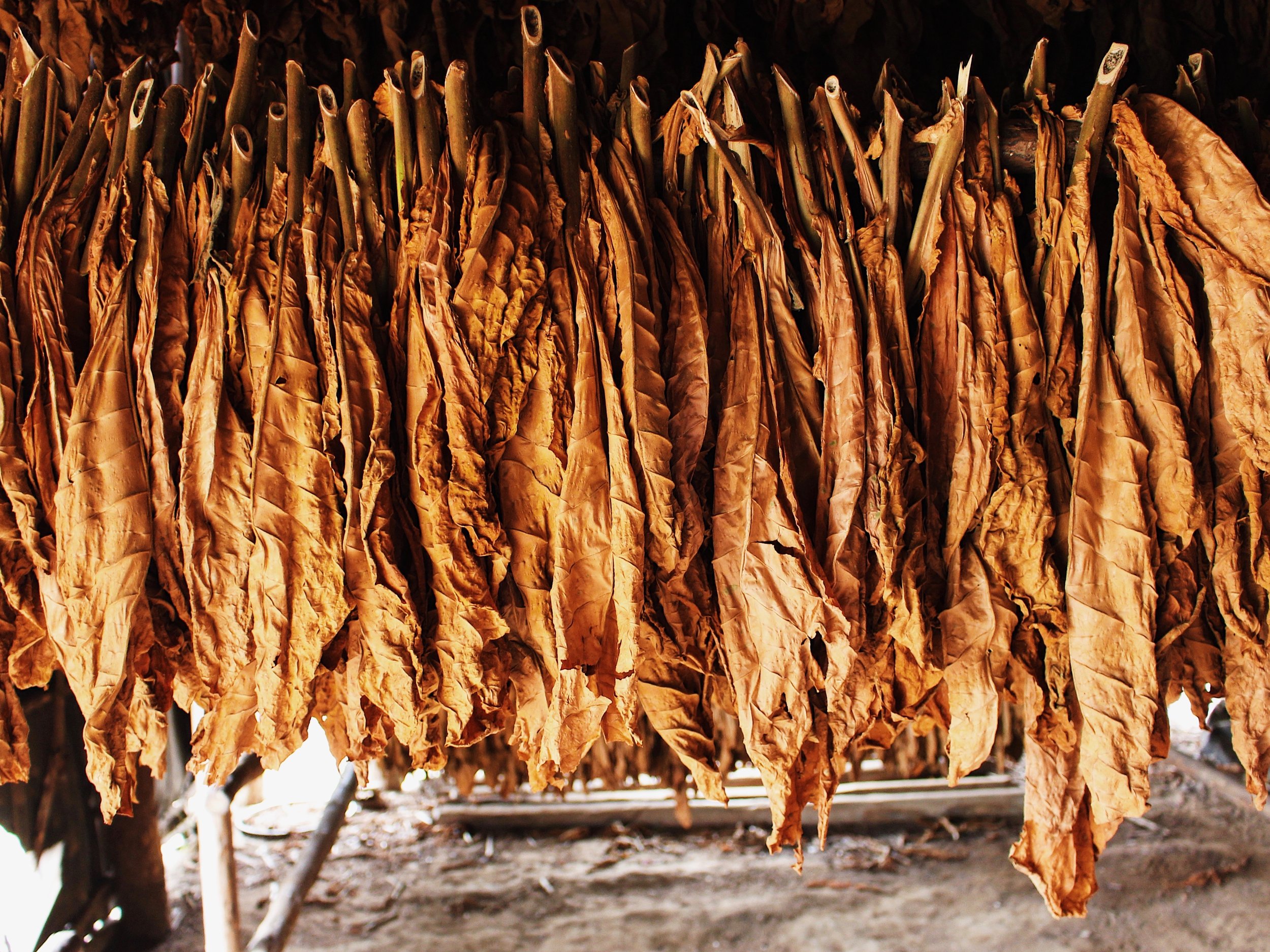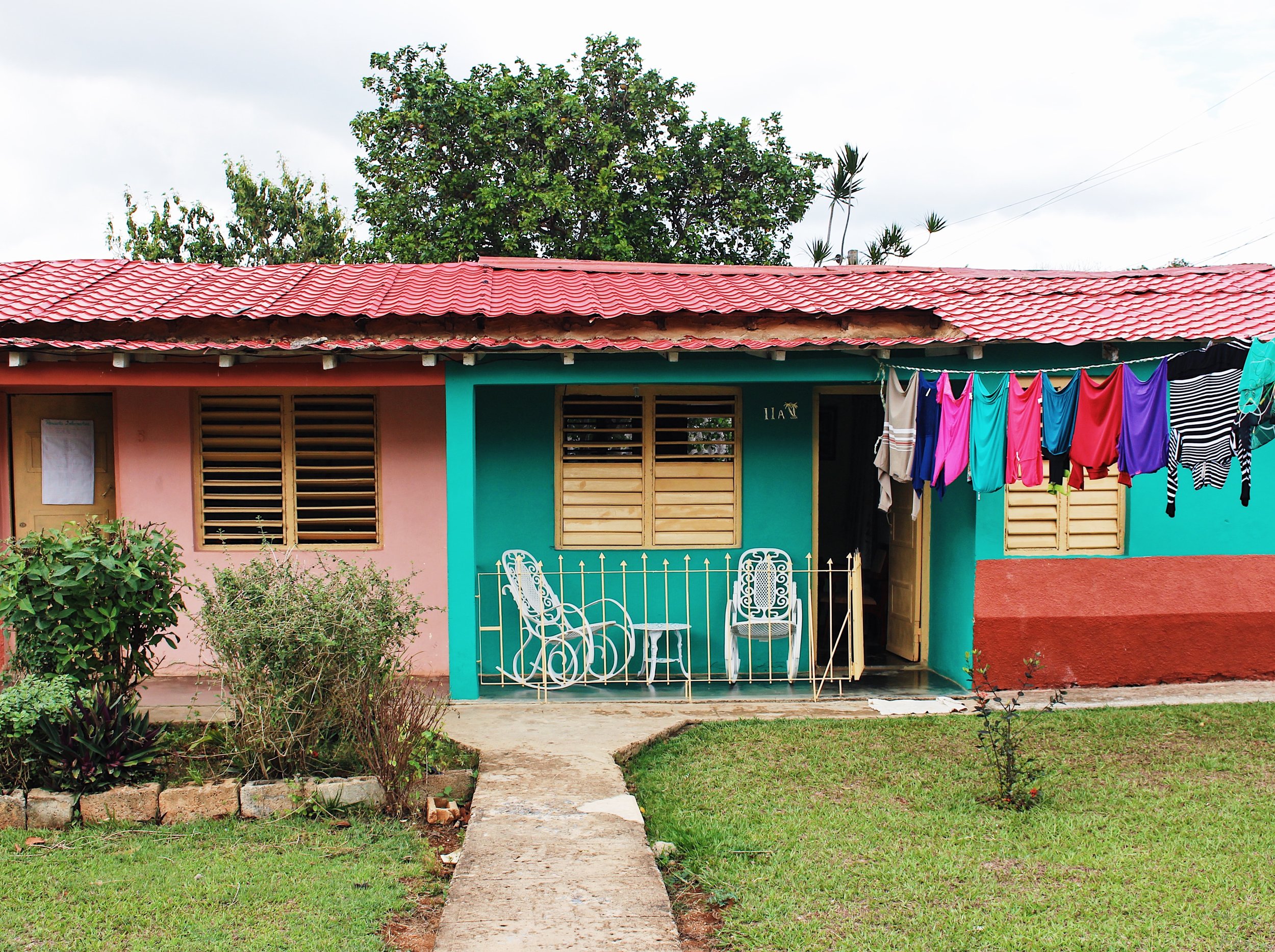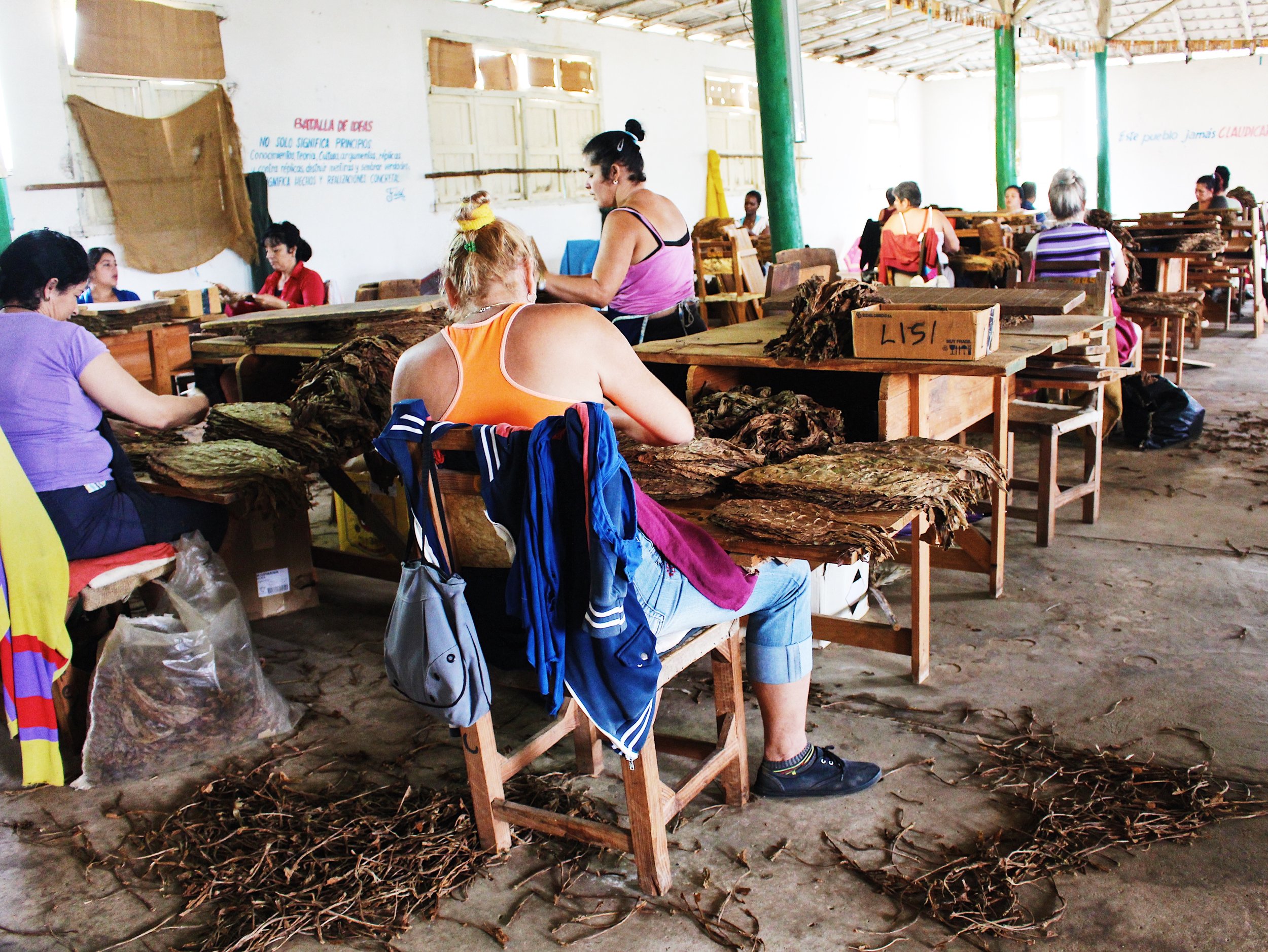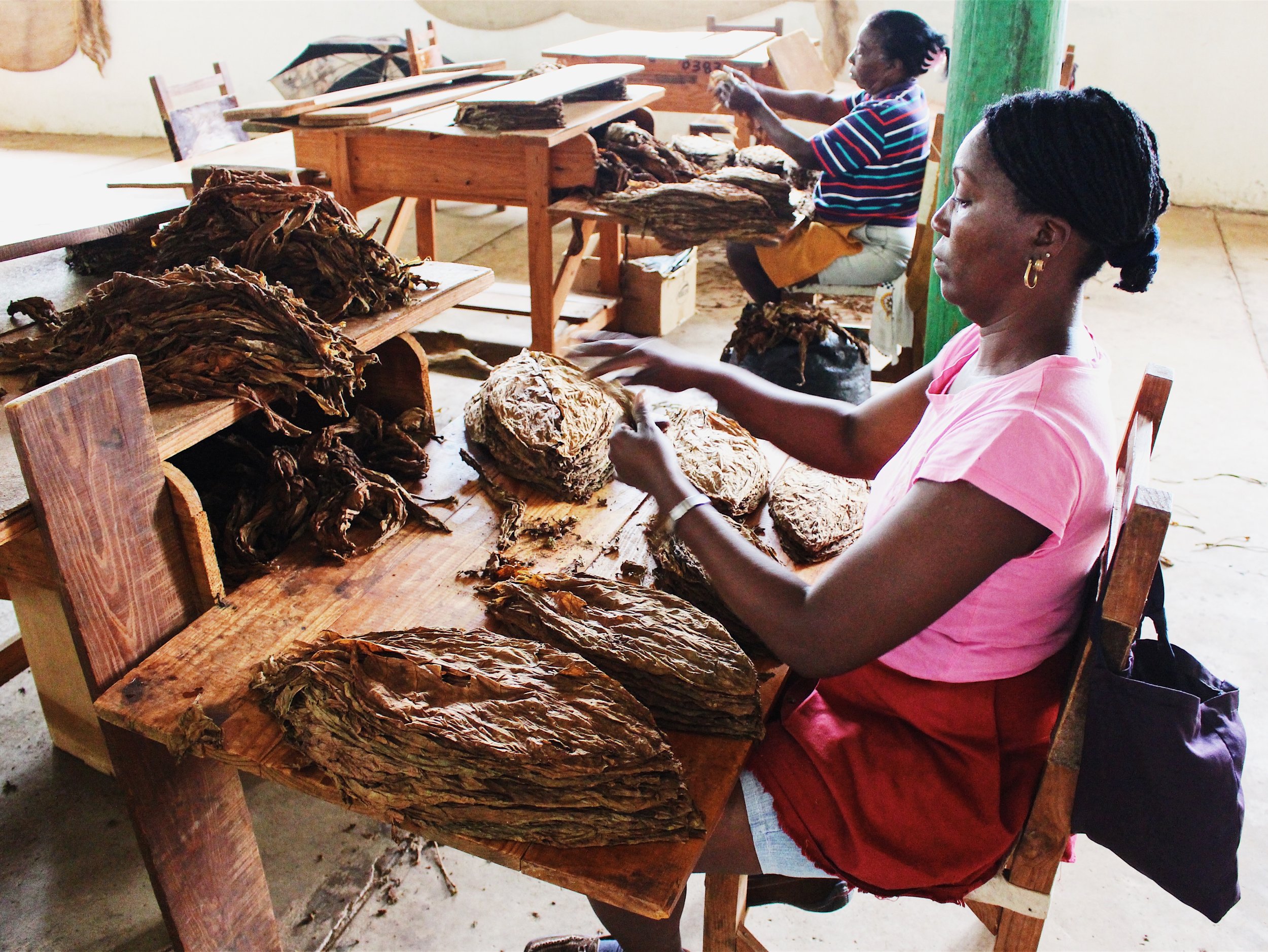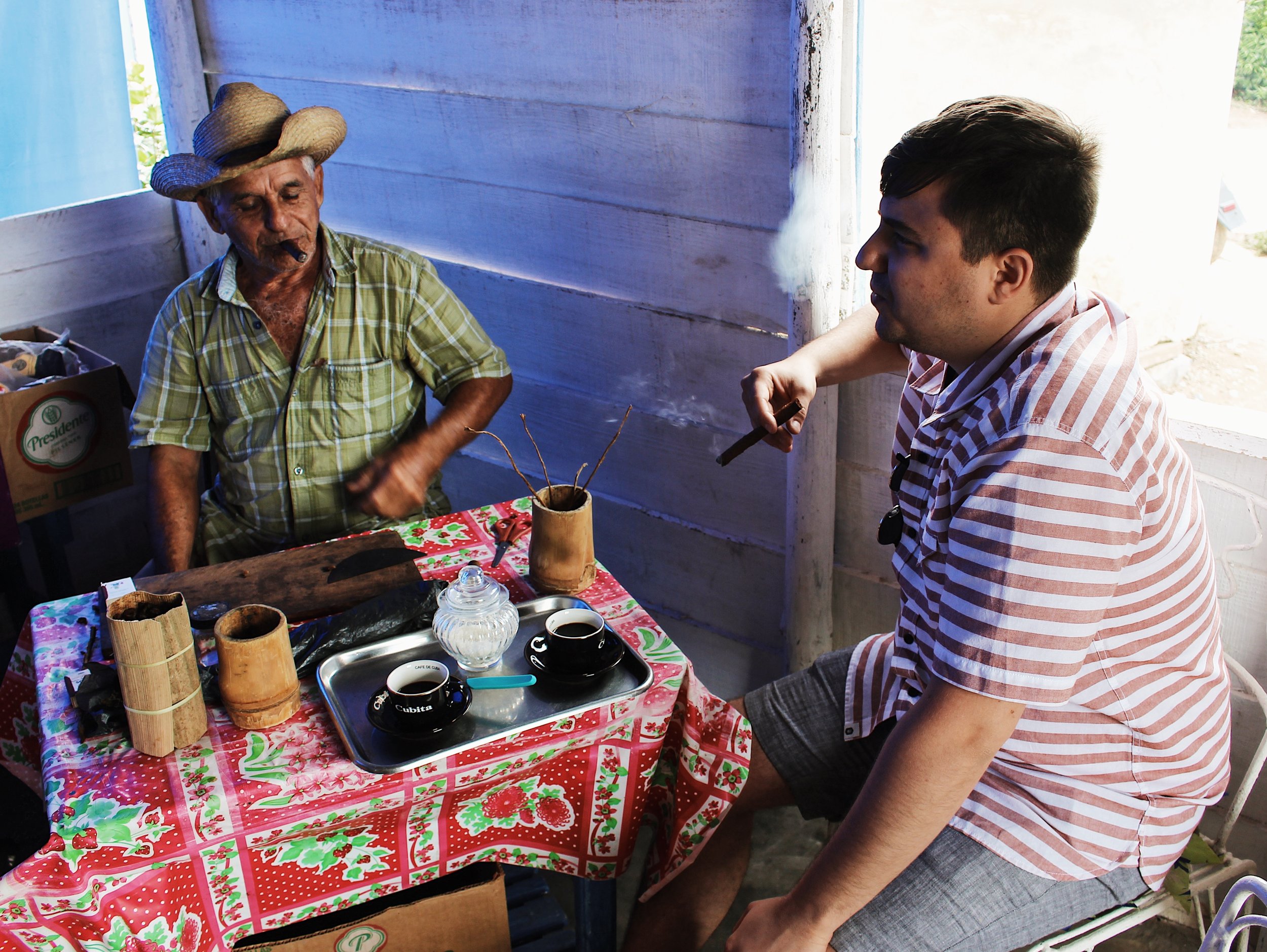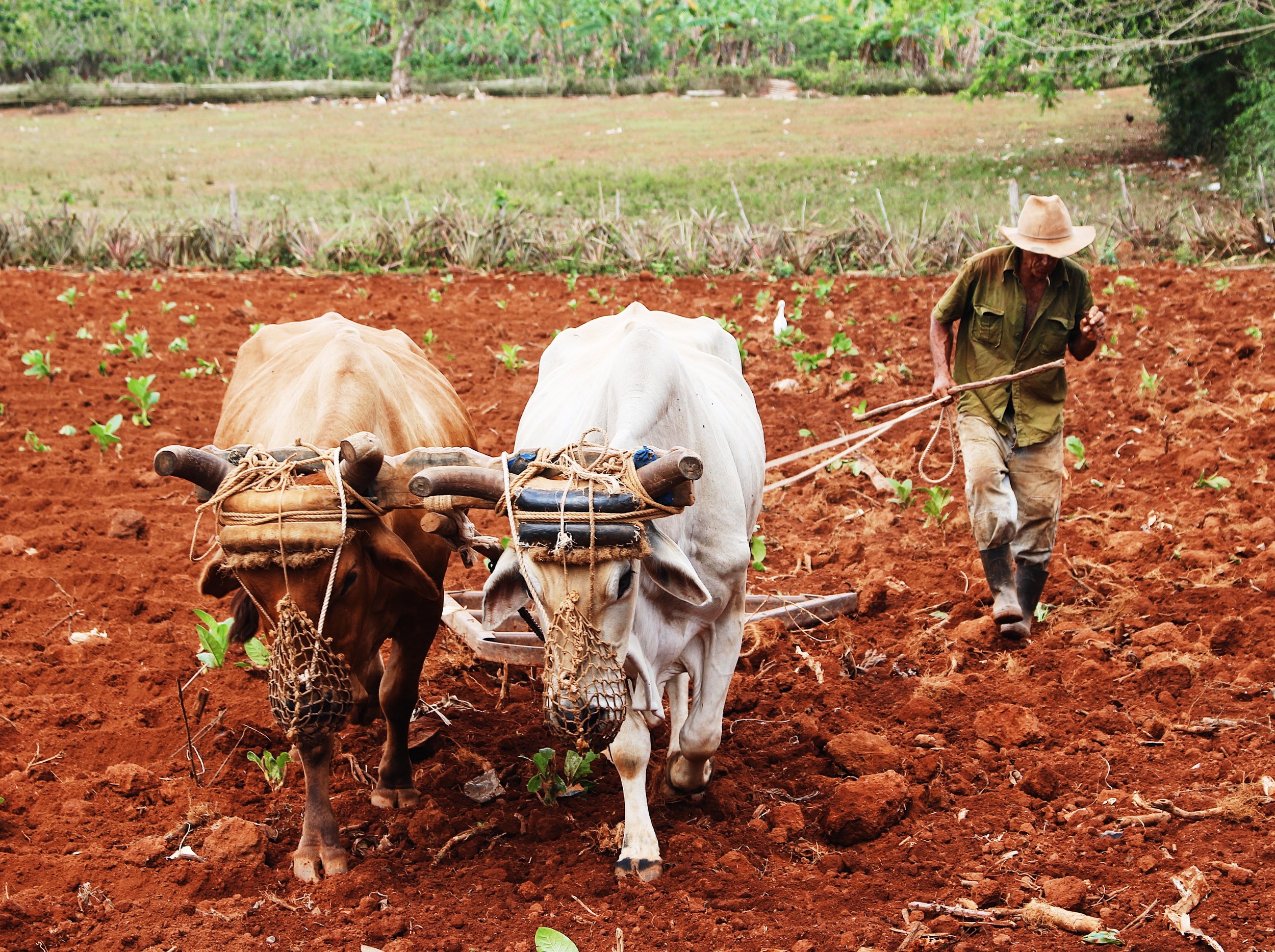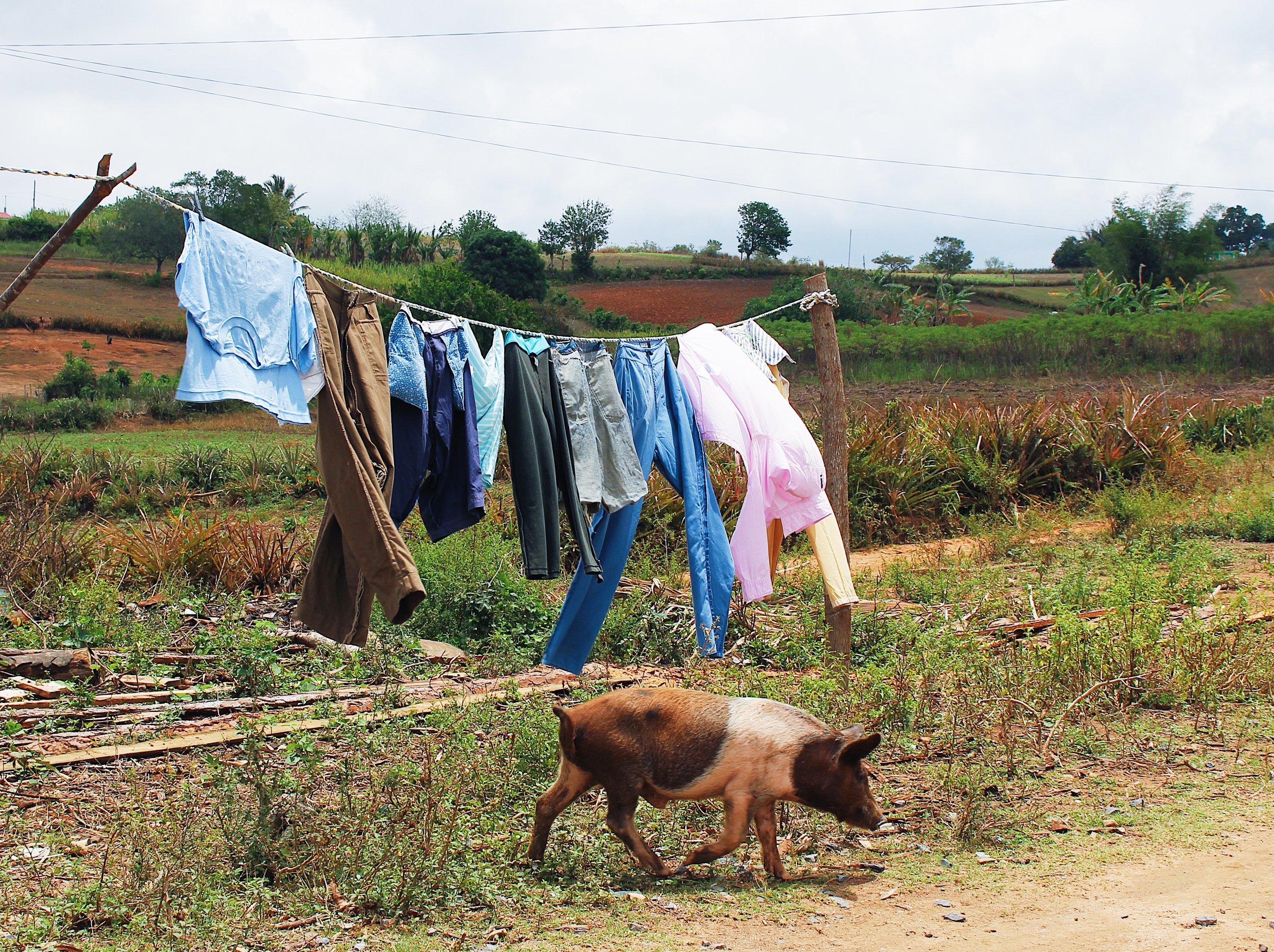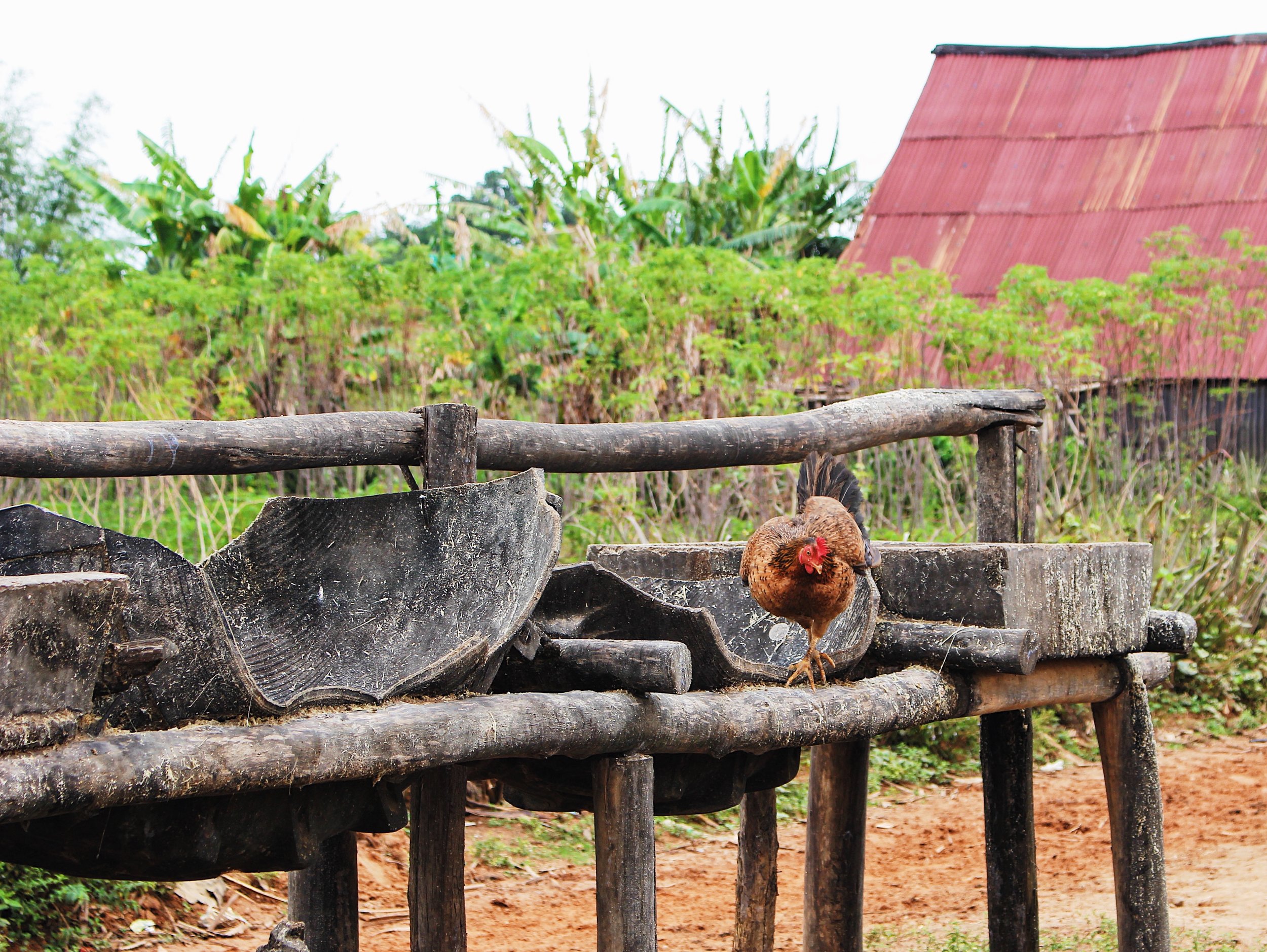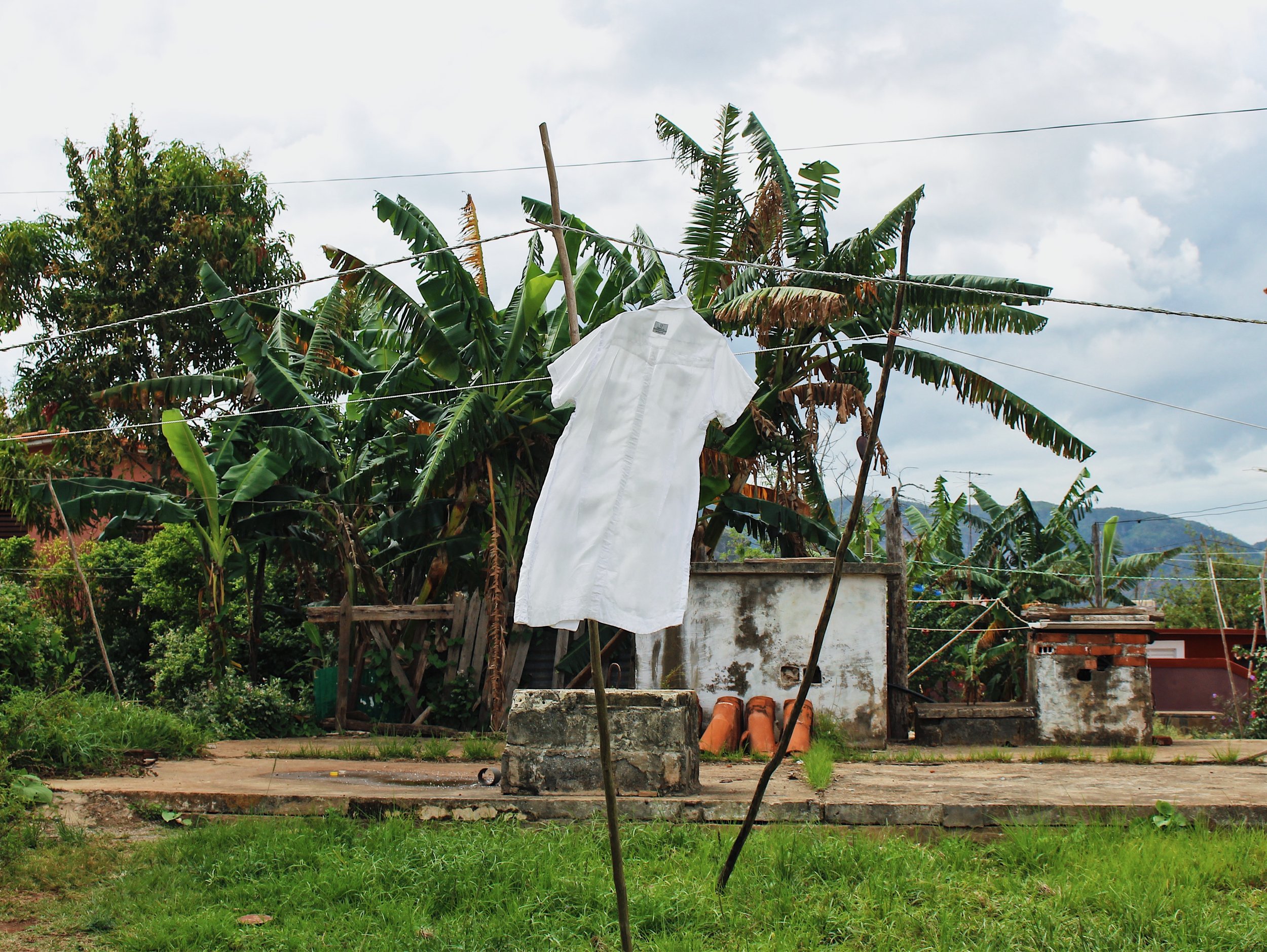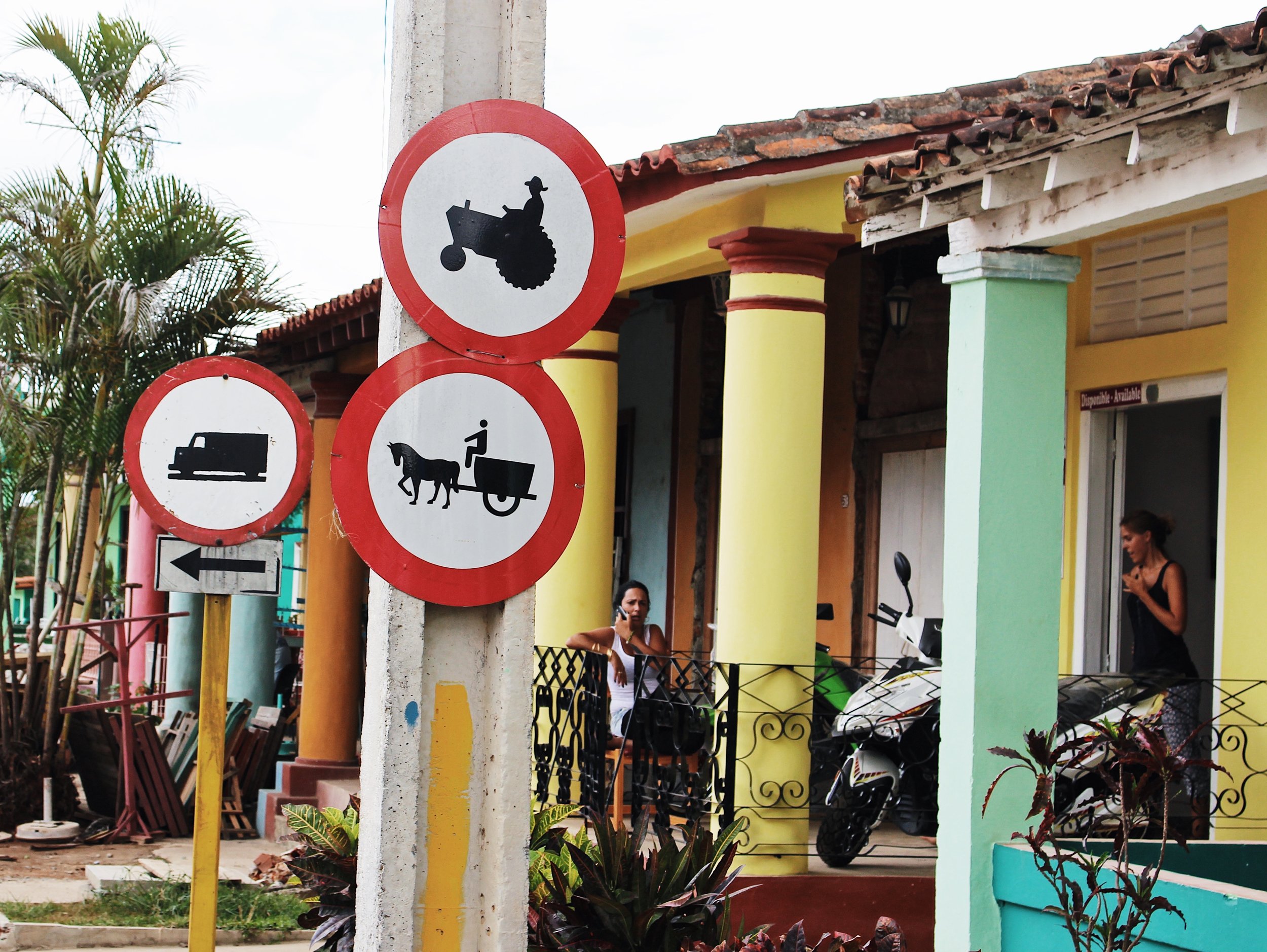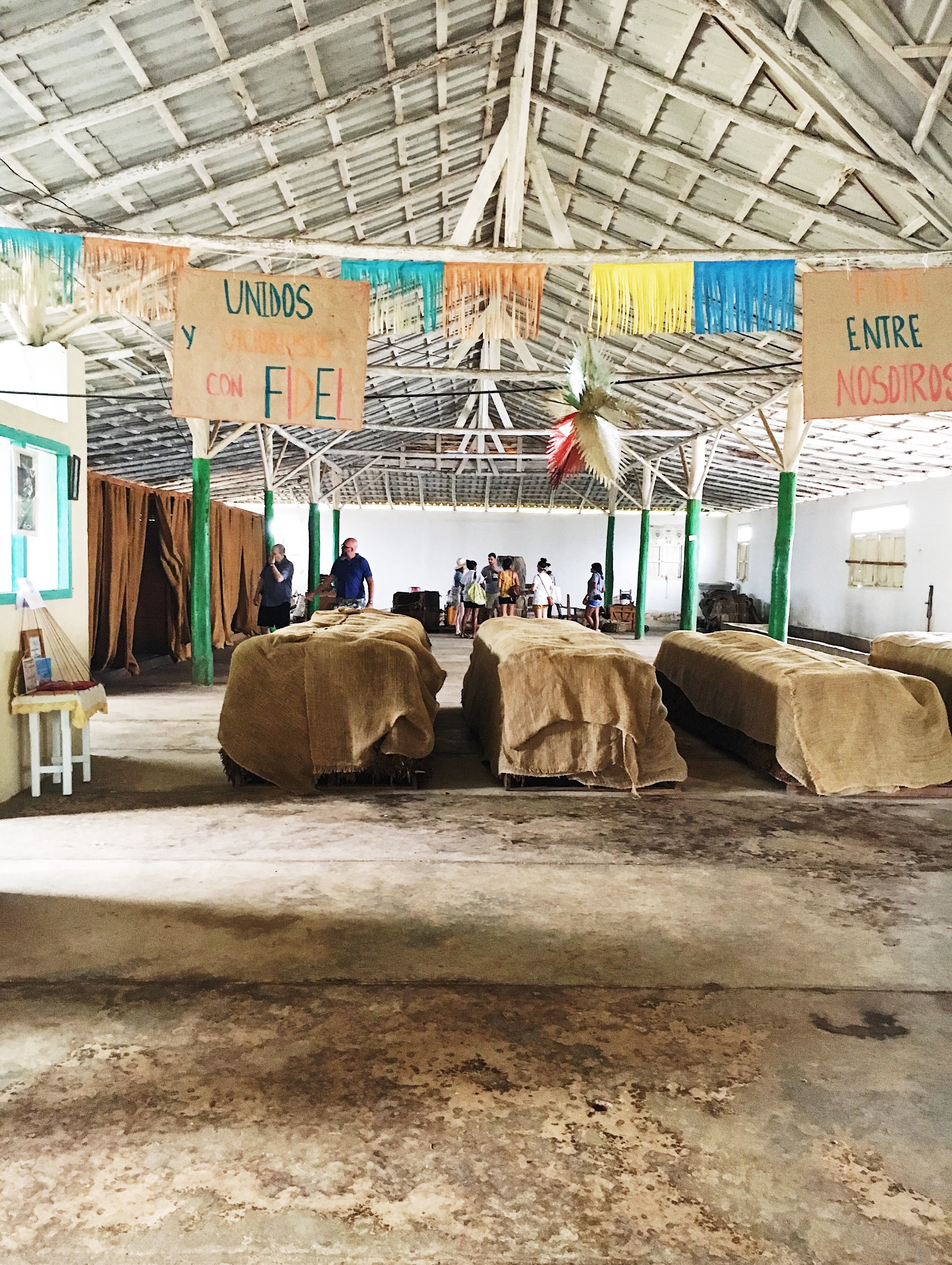When you think of Cuba, you might imagine an ice cold mojito, a warm cubano, a classic car chugging down the street, Fidel and Raul Castro in their revolutionary green caps, or a colorful street lined with lively Cuban people. But I would bet the image of Cuba that pops into most people’s minds is: the Cuban cigar.
tobacco leaves hung to dry
Cuban cigars have been treasured for centuries. The Taíno Indians, the native peoples of Cuba, were already smoking tobacco in a cigar-like form when Christopher Columbus landed in the Caribbean in the 15th century. Before authorizing the U.S. trade embargo in 1962 and effectively making them contraband, President John F. Kennedy ordered one of his aides to bring back 1,200 hand-rolled cigars from Cuba.
I am not a huge smoker (cigar, cigarette, or otherwise), but there was no way I was going to Cuba and not exploring this part of the country’s history and culture. It’s a two-and-a-half-hour drive from Havana to Viñales — the name of both the city and the valley that are home to Cuba’s tobacco fields. Some travel guides say you can make a day trip out of it, but if you want to experience the true Viñales, you have to take it slow.
every front porch has two rocking chairs and a laundry line
Everywhere in Cuba, people live the stoop life: Whether it’s on the stairs in front of their house or a second floor balcony, they find a comfortable chair, turn it toward the street, grab a cigar or a mojito, and people-watch. They holler to their neighbors as they walk by, invite friends in to join them for a drink, and thoroughly enjoy the passage of time from sun up to sundown. Nowhere is this more true than in Viñales. Every house, or casa particular, has a front porch with two rocking chairs (which are usually painted to complement the color of the house). Without moving, they beckon you to take a load off, grab a good book, and rock away the afternoon. And that’s exactly what we did. After some exploring, of course.
the stoop life
To avoid the challenges of renting a car in an unfamiliar country and navigating the roads without access to Google Maps, we decided to hire a driver to take us from Havana to Viñales, which ended up having its own challenges. We woke up at 7 a.m. to start the drive, and from the get go, we were on Cuban time. Our driver was MIA for 30 minutes while we tried to get in touch with the car company (by turning on our much-prized and very expensive data roaming). We eventually got in contact with him; he had gotten lost in the city but was on his way. When we arrived in Viñales, our driver couldn’t find our casa particular — not because it was hidden, but because they use family names to identify their houses instead of addresses, so we had to go around asking “Donde está Casa Tita?” When we finally arrived over an hour late, our tour guide, Dior, was patiently waiting there with a huge smile on his face, telling us not to worry: “This is Cuba!”
We hopped into a new car with Dior, and with a jovial “Ok? Let’s go!” (a catch phrase he repeated roughly every five minutes), we were off. A few of the stops — Cueva del Indio, El Jardín de Caridad, and El Mural de la Prehistoria — were deemed “must-see’s” and, while I’m glad I saw them once, I can’t say I’d go back again. We were really there to learn about cigars. Our first stop was a large warehouse where we observed the process of drying and curing tobacco leaves — a process that can take up to three months. Several women sat at small wooden tables flattening and classifying the leaves by size and color. They’d rip the stem from the leaf, removing the nicotine (who knew the nicotine was stored in the stem?!), and were paid based on how many leaves they could process in a day.
removing the stems, aka nicotine
women are paid by the leaf
With another hearty “Ok? Let’s go!” we headed out along a dirt road to a farm where we met a fourth-generation tobacco farmer. With a cigar hanging from the corner of his mouth (one of 10 he smokes every day), he showed us how to roll a cigar. His calloused hands and wrinkled face told the story of years of hard work accompanied by the enjoyment of many cigars. With 90% of tobacco leaves going to the government, farmers get to keep only 10% of their annual production, and they make sure to reserve the best for themselves (as they should). Unlike the cigars produced in factories, their cigars are all organic — no pesticides or fertilizers are added, and they even use honey to seal the cigars. We smoked a cigar with him, drank a Cuban (read: strong) coffee his wife brewed, purchased some organic cigars (as long as they are traditionally packaged, you can bring them back into the U.S. without any labeling or a receipt), and headed back to the town of Viñales.
farmer rolling a cigar by hand
afternoon smoke break
Upon returning to our casa particular, we were greeted by our host, who offered a refreshing mango juice and showed us to our room. We had an entire half of the house to ourselves. Although it was fairly basic, we didn’t need much more in this rural setting. While my boyfriend took a nap, I wandered through the fields and along dirt paths, observing how life is lived in Viñales: A farmer eagerly posed his two cows for my camera as they plowed; shirts, jeans, and undergarments fluttered on clotheslines outside every house; neighbors chatted from across the street or the next floor up; pigs and chickens roamed freely; and tourists could be heard laughing as they went horseback riding through the fields. With a mojito in one hand and a book in the other, I curled up in a rocking chair and spent the rest of the afternoon enjoying life, Viñales-style.
plowing a field, posing his cows, and smoking a cigar — impressive
While Viñales is the second-most visited city in Cuba and may not technically be “off the beaten path,” it certainly feels like you’re stepping into another world when you visit. Lush green fields meet dirt roads, hard work is celebrated with lazy afternoons, smiles are contagious, and the best thing to do is soak it all in from a rocking chair on the front porch with a smoldering cigar perched between your lips.

